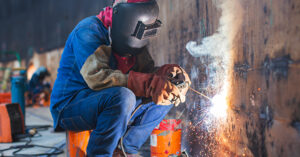 Red-D-Arc Welderentals on the differences between oxy-acetylene and arc welding
Red-D-Arc Welderentals on the differences between oxy-acetylene and arc welding
September 18, 2023 REDWIRE is news you can use from leading suppliers. Powered by FRASERS.
Posted by Red-D-Arc Welderentals
Offers A Full Range Of Rental Welding And Positioning Equipment For A Variety Of Processes And Applications... Read more
Subscribe
Free REDWIRE e-newsletter

Welding techniques come in many forms.
For top expertise and products in welding equipment, look no further than Red-D-Arc Welderentals. This equipment can be used for different types of welding, including such common examples as oxy-acetylene welding and arc welding. These processes are generally used for the same purposes, but they have very important differences.
A recent blog entry by Red-D-Arc examines the differences between oxy-acetylene and arc welding, including respective pros and cons.
Gas versus electric arcs
Also known as gas welding, oxy-acetylene welding uses two sources of gas, oxygen and a combustible fuel. Pumping both through a torch, mixing them, and blasting them through a nozzle creates a jet of combustible gas. Arc welding use the power of an electric arc to melt conductive metals quickly: a current is placed through a circuit, with one end on a welding torch and the other on the workpiece. When the two come close together, the circuit completes in a high-energy arc.
One of the biggest differences is temperature. Oxyfuel welding creates flames as hot as 3,600 degrees Celsius, more than enough to melt steel for joints. But arc welding generates even more heat, and this is often preferable. Lower heat can create a large heat-affected zone, according to Red-D-Arc, which can lead to more area of the steel becoming compromised. Other criteria to consider when weighing these options:
- Cost of consumables. Gas welding uses two consumables, filler rods and fuel gases. But since arc welding creates higher-quality welds, it takes less time and often saves money.
- Safety in the process. Gas welding has various dangers in explosive fuel gases, while arc welding adds extra hazards, from electricity to ultraviolet radiation.
- Ideal use. Arc welding cannot be used on non-ferrous metals or non-metal components, whereas gas welding is preferable when metal that is not conductive must be joined.
- Depth and quality of joints. Gas welding struggles with thick steel pieces, while arc welding is near-instantaneous with its high power.
- Skill, speed, and efficiency. Gas welding is generally more skill-intensive, while arc welding depends on the specific process.
To learn more, contact Red-D-Arc.
Share
Posted by Red-D-Arc Welderentals
Offers A Full Range Of Rental Welding And Positioning Equipment For A Variety Of Processes And Applications... Read more